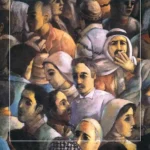On this day 162 years ago, in this very state, the white slaveowner and state senator Edmund Ruffin fired the first shot of the Civil War against Union troops occupying Fort Sumter. In so doing, he unwittingly ignited one of the greatest revolutionary firestorms in world history, and indeed the only true social revolution in the history of the United States. That revolution would spell the doom of his class, destroying the institution of chattel slavery forever. But today, hardly anyone knows it as a revolution at all. According to the Southern Poverty Law Center, ninety-two percent of American high schoolers are unaware that slavery was the primary cause of the Civil War, let alone that it and the period of Reconstruction that followed were, in the words of W.E.B. DuBois, “one of the most extraordinary experiments of Marxism that the world, before the Russian Revolution, had seen,” striving towards the creation of a “dictatorship of labor” that would “achieve democracy for the working millions.” This ignorance is no accident of history.
First things first: the period from the election of Abraham Lincoln in 1860 to the end of Reconstruction in 1877 was a revolution, malicious revisions from bourgeois and racist historians notwithstanding. It belongs in the pantheon of great social revolutions that shaped the course of world history, alongside the French, Haitian, Russian, and Chinese. Like the contemporary Paris Commune of 1871, the American revolutionary period captured the attention of the young communist movement, and the cause of emancipation won their fanatic devotion. Karl Marx, as the chief European correspondent for the New York Tribune, an abolitionist paper aligned with the early Republican Party, reported extensively on the progress of the Civil War, which he deemed the “American Antislavery War.” In 1864, he authored a letter from the International Workingmen’s Association to President Lincoln congratulating him on his re-election and urging him to make “death to slavery!” the watchwords of his second term. Workers’ organizations across Europe held mass meetings demanding their governments retract their support from the Confederacy, efforts which, in DuBois’ estimation, likely prevented the British Empire from entering the war on the side of the slaveowners. Some 200,000 German immigrants, many of them political exiles for their participation in the German Revolutions of 1848, fought in the Union Army to destroy the slave power and usher in the republic they had failed to build on the other side of the Atlantic a decade prior. A great many of these were communists, including Joseph Weydemeyer, a Union general who was formerly a member of Marx’s own Communist League and consulted with Freidrich Engels throughout the war, making one of the grandfathers of the world communist movement an unofficial military advisor for the Union. Weydemeyer later distributed copies of the Communist Manifesto to the citizens of St. Louis en masse when he oversaw Reconstruction there as military administrator.
Anecdotes about the relation of foreign and German-American communists to the Civil War are interesting, and offer some evidence of the revolutionary character of the period, but they do not get to the heart of why it must be considered a revolution. What qualifies this great upheaval as America’s second revolution, and by far its greatest, is the world-historic triumph of the slaves-turned-freedpeople. During the Civil War, an estimated half a million slaves fled their plantations in what DuBois called a “general strike,” obliterating the Southern economy and swelling the ranks of the Union Army as they joined it to take up arms against their oppressors and free those they had left behind. In addition to dooming the Southern cause, their mass action made the question of abolition a settled one, though it would take some time for white politicians in the North to catch up to the historical inevitability they had wrought with their own hands and rifles. As the flames of war died down, the flames of revolution only grew brighter, and throughout the period of Reconstruction the Black masses who had freed themselves from the domination of bondage struggled to free themselves from the domination of political disenfranchisement, enforced illiteracy, and economic want. Freedpeople, joined for a time by the white working classes, seized equal suffrage, equal public education, and in some places, the very land they had once worked as slaves. But this elementary transformation of society was too much for the Northern capitalists who had, starting with the Emancipation Proclamation of 1863, anxiously tolerated the revolutionary mobilization of Black labor as a necessity to win the war. From the beginning, they robbed the revolution of its strength by refusing to expropriate most of the South’s plantations. After all, if the working classes were allowed to seize the property of the planter class, what could stop them in their newfound confidence from turning next to the property of the capitalist class? This first betrayal presaged the next. Rather than permanently crushing the political power of the defeated plantation aristocracy—a mercy compared to the fate they had met in Haiti, something their worst fears and most frantic protests against Black freedom indicated they knew they deserved—the Northern bourgeoisie gradually allowed former slaveowners and Confederate officials to become re-enfranchised. This, coupled with the economic weight of the lands they still possessed, paved the road for their return to the heights of the Southern class system, not as a class of slaveowners per se but as a class of parasitic landlords who, through political subterfuge and the terroristic violence of white militias and lynch mobs, subjugated the Black masses once more to a condition only nominally superior to slavery. The revolutionary state constitutions of the 1860s and 1870s gave way to new apartheid regimes. Counterrevolution prevailed, and the greatest advance this country has ever made towards the ideal of the democratic republic was reversed.
It should now be clearer why this history has been obscured. The fact that millions of enslaved people, immigrant factory workers and indebted farmers collectively destroyed human bondage, overthrew a class of monied elites, set fire to the estates and mansions of wealthy aristocrats, and led the charge in one of the boldest democratic experiments in human history is far too dangerous an idea to teach a class that remains over-worked, under-paid, over-policed, under-fed, over-drawn, and under-insured in the modern day while a small handful of people are richer than the entire planet was when slavery was abolished in name in 1865. If given the chance, tens of millions of people in this country are liable to learn the “wrong” lessons of the Civil War and Reconstruction—that is to say, the correct ones—and decide that the tasks of this great revolution remain unfinished. They are liable to realize that it is the historical destiny of the worker class to win the battle for democracy and steer human civilization towards a future where labor rewards us all, not merely a privileged ruling class. They are liable to conclude that the sale of human beings by the hour on the labor market is no more legitimate than their wholesale on the auction-block. Worst of all, they are liable to take inspiration from their nineteenth-century comrades who had the courage to force their own exploiters by way of general strike and insurrection into the dustbin of history.
No, the bourgeoisie cannot teach this history. It is a matter of survival. They will always cloak it in various disguises, some crude in their reactionary stupidity (“Lost Cause” lunacy) and others more clever and seemingly progressive. So we, the socialist movement, must teach it for them. We must celebrate the Second American Revolution, America’s true revolution, and strive for a third.




Leave a Reply